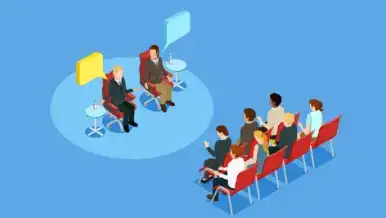Last week I ate at a restaurant in the Greenville area of West Jakarta. The restaurant sells Indonesian food menus. At that time, I asked the waiter, ‘ Is the pomfret freshwater or from the sea?’ Then the waiter was confused and asked his friend, who also didn’t know.
Next, they asked about the kitchen, and I got an answer after 5 minutes. I note that the restaurant owner was there and did not help to provide solutions and just kept quiet. Maybe he doesn’t know and doesn’t understand the food being sold because he resigns himself to the chef.
This story continued again when I ordered a honey lemon which turned out to be sugar and lemon (from the waiter’s answer). Then when I made a payment with a debit card, it turned out that the employee who received my card had not been able to use the available card swipe machine (EDC).
The restaurant owner immediately said: ‘You learn, don’t, you just can’t!’. The story is even funnier at this restaurant because the employees who can’t use EDC were scolded in front of me by the owner. Who’s at fault if employees can’t?
Dear readers, in the story above, two incidents were all caused by the restaurant owner who did not have a standard TRAINING CURRICULUM.
This causes employees not to understand everything in the restaurant, from product knowledge to the use of EDC machines. I dare to make sure that this is not the fault of the employees but the wrong way of training the employees.
As a Business Consultant & Franchise Consultant who handles a lot of standardization of company systems, including employee training standards, I would say that the restaurant does not have a bar in training its employees.
New employees must not be trained and immediately asked to work, and if they are wrong in serving customers, they will be severely reprimanded. If this is the case, employees will despair, and there will be frequent employee turnover because many leave.
Are you the type of business owner like the story above? If yes, then you must immediately improve by making standardization of training so that all employees can work properly and correctly according to company standards.
In short, you have to create an EMPLOYEE TRAINING CURRICULUM. The curriculum should be explicit about how long an employee must go through a study period before they enter work in your company.
For those who don’t have an idea, I provide an example of a TRAINING CURRICULUM for a Customer Service / CS position.
The training materials for CS include: How to Serve Customers, Understanding Customer Character, Communication Methods, Selling Techniques, and How to Deal with Customer Complaints.
In addition to the unique skills materials mentioned above, CS employees should also be given basic training in Vision, Mission, Company Values, Product Knowledge, Work Ethics, Loving Work, Being Yourself, and other materials that support their work.
If the topic of the TRAINING CURRICULUM has been designed, the next step is to predict the time required for each of these materials and the sequence of the training program so that the CS quickly understands it.
Thus it will be known how long a CS employee needs the training before being deployed to serve customers.
Next, you must execute training activities consistently to create employees who have clear standards. No employee may work before being trained according to the curriculum. This is how big companies shape their employees. So don’t be surprised if they can create employees with the same standards who, in the end, can work optimally.
In closing, I would like to say that if there are employees who do not work well because they have not been trained, then it is you and not the employees who are at fault.


